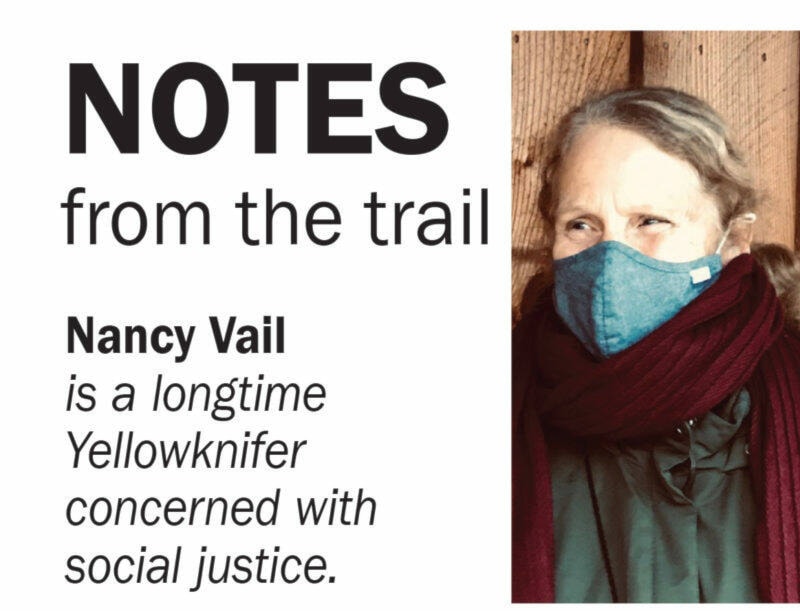Treating addictions is not just about treating addicts. It is about treating the community.
Last week was National Addictions Awareness Week and most of the discussion focused on creating a made-in-the-NWT treatment centre, which we have not had for several years. Health and Social Services opted instead to send people south to either Alberta or British Columbia where, after spending six weeks in a recovery program, they are generally returned home. The only centre run by First Nations was Poundmaker’s Lodge outside of Edmonton, which terminated its contract with the GNWT. We wonder why.
Why is it that even though the majority of those receiving treatment are First Nations people, we continue to send them to recovery centres operated by white people? They might have all the right education but that does not mean their methods are right for other cultures. That’s colonialism.
In a series of interviews done by the CBC last week, Roy Fabian, long-standing chief of the K’atlodeeche First Nation in Hay River, who worked in recovery, said that one of the issues is the different approaches between the cultures. It is not one size fits all.
Europeans, he said, tend to live in their heads and take a head-oriented approach to recovery while First Nations live more from their hearts and need to be on the land. That is where true healing occurs.
We do have some healing camps operating in the territories, such as the one by the Multiplex but they are limited in number. Our more formal recovery approach is colonial at best and really, an insult to the First Nations who know how to heal themselves if we let them.
The closed facility in Hay River was state of the art and, word has it, was running successfully until the GNWT became involved.
We do not know what is best for the First Nations and we do not know how to heal them. All we can do is give them the tools they need to do the work.
In addition to this is the healing needed by the larger community.
When Covid-19 first hit two-and-a-half years ago, all of us participated in an attempt to keep each other well. We made and wore masks. We delivered groceries to those at risk. We washed our hands so often we thought they would fall off. We stayed home. We shut down the offices. Whatever was required to fight this virus, we did it.
We took exceptional care of each other except for those without homes – usually those dealing with addictions – who were left on the streets.
So much disrespect. No wonder people have a hard time getting well.
Last year with winter fast approaching, city council was asked to approve shelter space on Franklin Avenue so that those without homes would have somewhere to go. Council said no, knowing that that could be a death knell for some on the streets. Instead, they decided to build a multi-million-dollar swimming pool.
They did not offer alternatives, they just said no.
To its credit, the GNWT initiated emergency measures and with the help of the private sector, were able to provide emergency shelter.
Addiction is born of trauma and disrespect and it appears that the wider community still suffers from the latter.
Why is it, for example, that we have a totem pole at the entrance to Somba K’e park which came from Haida Gwaii and not something showing respect to the First Nations here? Why are the picnic benches in the summer filled with mostly white office workers while our First Nations sit in the bushes? Why don’t we have a teepee for healing right in the middle of the park?
It is not just the addicts who need help. We do too.
Like Covid, addictions is an illness and, like Covid, it will take a community to overcome it.
Because cultures are different does not mean one is better… it means they are different. Let the First Nations heal themselves and let’s give them the tools they need to do that.
And in the meantime, let’s show our solidarity and mean it when we say, “We are in this together.”
